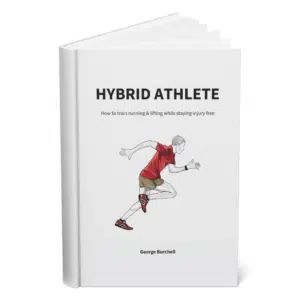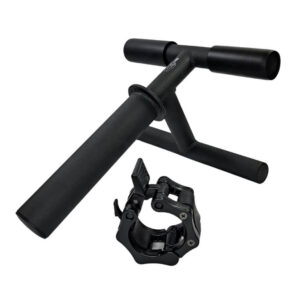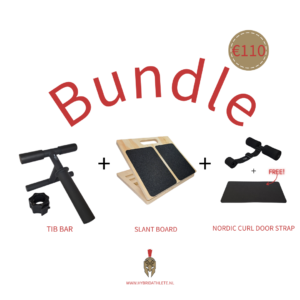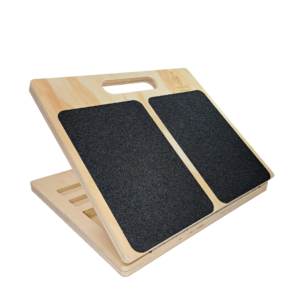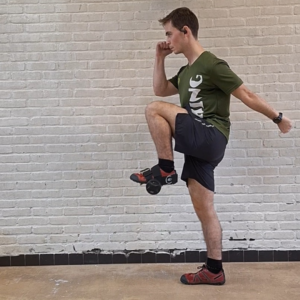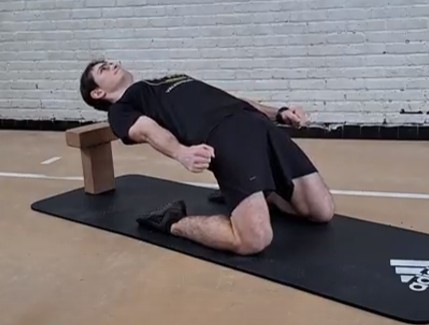
Although less popular than its name counterpart the Nordic ham curl, reverse Nordics have a lot to offer to every athlete out there. And, it’s easier to get into and master it, since the regular Nordic ham curl requires a lot of strength and mobility to begin with.
If you were on the edge of putting reverse Nordics into your leg day routine, hopefully, this article will convince you to do so.
Let’s get right into it.
Table of Contents
What are Reverse Nordics?
Imagine getting down on your knees to do a Nordic ham curl, but instead of going forward with your torso, you go back. That’s the simplest explanation of a reverse Nordic.
The rev. Nordic is a bodyweight exercise that consists of “falling back” while on your knees and going back up. It is an exercise that focuses on the eccentric movement of the quads and the hip flexors, while it excludes the hip hinge mechanics. This means that your hip flexors and quad heads lengthen while under tension.

What Are Reverse Nordics Good For?
The main focus of the reverse Nordic is on the quads (all four heads) and the hip flexors. Besides that, this exercise develops core stability as well as plantar flexion of the ankle.
Here’s a quick list of the main reverse Nordic benefits:
- Quad activation – the eccentric forces we talked about develop quadriceps strength and stability
- Great for targeting the rectus femoris
- Injury prevention – this is a great exercise for knee bulletproofing thanks to its range of motion
- Hip flexor strength and mobility – the flexors also work to keep your torso stable during the ascension
- Knee flexion and extension development – especially important for knee bulletproofing in sports that include jumping
Development of deep core muscles – the core works extra to keep your torso straight during both the ascend and the descent phase
How to do Reverse Nordics
The reverse Nordic is not exactly a beginner exercise, although there’s a way to build up to it (more in the video below). To fully master it, you will need some ankle mobility and core strength, next to, of course, quad strength.
Here’s how to do the reverse Nordic curl:
- Kneel on the floor (use a cushioning pad if needed)
- Engage your core and squeeze your glutes
- Without hinging at the hip, lean back in a controlled manner. Keep your core tight
- Once you reach a full stretch, bring yourself up without hinging at the hips
Reverse Nordic curl cues and tips:
- Keep your legs parallel and try not to internally or externally rotate at the knees
- Use a box or a stack behind you for progression. The higher the stack the easier to start (similar to the sissy squat)
- Practice to the full range of motion using resistance bands tied in front of you by holding on to them.
Reverse Nordics For Beginners
Here’s a video that includes the correct reverse Nordic curl form and tips on how to build up to a full rev Nordic:
How Often Can I Do Rev Nordics Curls?
As with everything in sports, the answer is – it depends. If you are an advanced athlete with optimized recovery, you can afford to do the reverse Nordics multiple times in your microcycle. However, due to the taxing nature of the exercise, 1 to 2 times a week is optimal for most people.
Just remember to never work through pain.
What’s The Difference Between Nordic Ham Curls, Sissy Squats and Rev Nordics?
At Hybrid Athlete, we value these three exercises quite a lot. While the regular Nordic curl is similar more in the name than in biomechanics, the Sissy squat is actually more in the realm of rev. Nordics. Check out our comparisons in these guides:
Wrap Up
And there you have it, a quick guide on reverse Nordic curls, how to do them, and what benefits to expect when you start doing them regularly.
There isn’t a definitive list of injury-prevention exercises everyone should do. We are all different, from genetics to specific injuries. But if there was a list of exercises that build strength and mobility, the reverse Nordic would definitely be on it.
Stay strong, mobile, and injury-free.
Get the best injury-prevention exercise equipment at our shop:
GET THE BEST INJURY-PREVENTION TRAINING EQUIPMENT:
Above all, a storyteller. Then comes marketing, branding, writing music, powerlifting, and woodworking.

